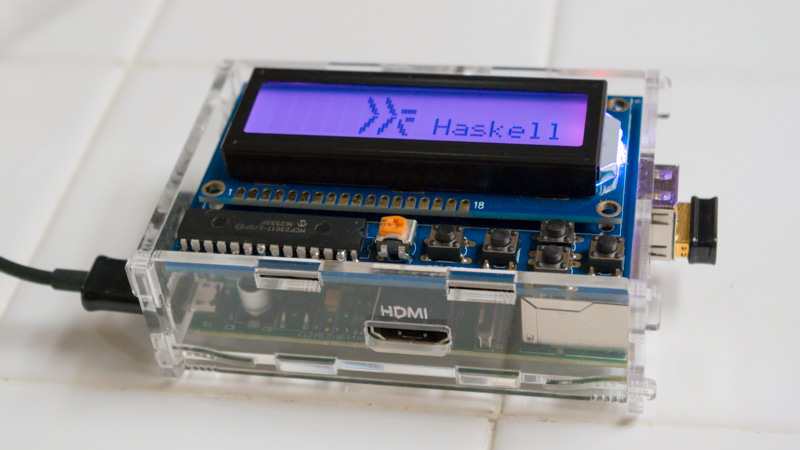pi-lcd alternatives and similar packages
Based on the "Hardware" category.
Alternatively, view pi-lcd alternatives based on common mentions on social networks and blogs.
-
verismith
Verilog Fuzzer to test the major simulators and sythesisers by generating random, valid Verilog.
InfluxDB - Power Real-Time Data Analytics at Scale

* Code Quality Rankings and insights are calculated and provided by Lumnify.
They vary from L1 to L5 with "L5" being the highest.
Do you think we are missing an alternative of pi-lcd or a related project?
README
This package allows using an Adafruit character LCD and keypad kit on a Raspberry Pi from Haskell. The LCD+Keypad Kit has a 16x2 character LCD, an RGB LED backlight, and five buttons. It works on all models of Raspberry Pi, and plugs into the GPIO header. It only uses the I²C pins on the header.
This library automatically handles Unicode, using the LCD controller's built-in characters where possible, and using the "custom characters" feature, along with a 5x8 font bundled with this package, to emulate Unicode characters which are not built-in. The user of the library can also define their own custom characters.
Everything you need to use one of these LCDs is exposed in the
System.Hardware.PiLcd module. The submodules are only exposed
because they might be useful to reuse for other types of hardware,
such as if you are using an MCP23017 port expander or an HD44780
display controller in some other context. But if you're using the
Adafruit character LCD and keypad kit, all you need is
System.Hardware.PiLcd.
Before using this package, you'll need to make sure that
I²C is enabled on your Raspberry Pi, under "Advanced Options" in
raspi-config.
Using PiLcd is as easy as:
{-# LANGUAGE OverloadedStrings #-}
import System.Hardware.PiLcd
main = do
lcd <- openPiLcd defaultLcdAddress defaultLcdOptions
updateDisplay lcd ["Hello,", "World!"]
setBacklightColor lcd Cyan
closePiLcd lcd
There are additional examples in the examples directory.
This library is specifically designed to work with GHC 7.6.3 and up,
and to not use Template Haskell, so it will work with the
system-supplied version of GHC on Raspbian "Jessie." Just do
sudo apt-get install ghc cabal-install and you're good to go. (You
should also increase the swap space by editing /etc/dphys-swapfile.)
There are other ways to install more recent versions of GHC if you
want; see the wiki page for details.
This is a fairly early release, and there might be breaking changes in the future. Please contact me, by filing a GitHub issue, or by email, if you have any feedback on the library. I'd also be curious to hear how the library is being used!



